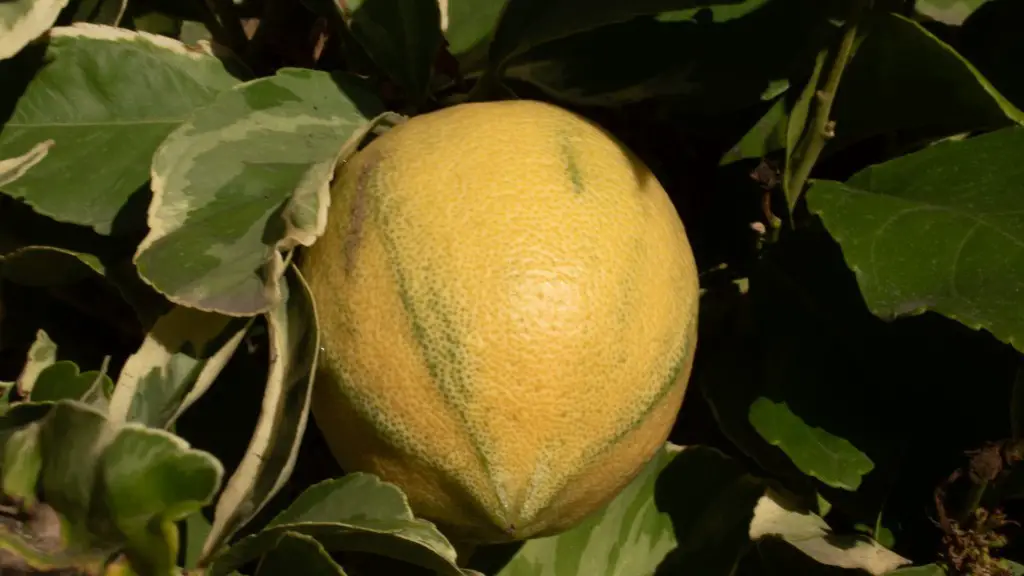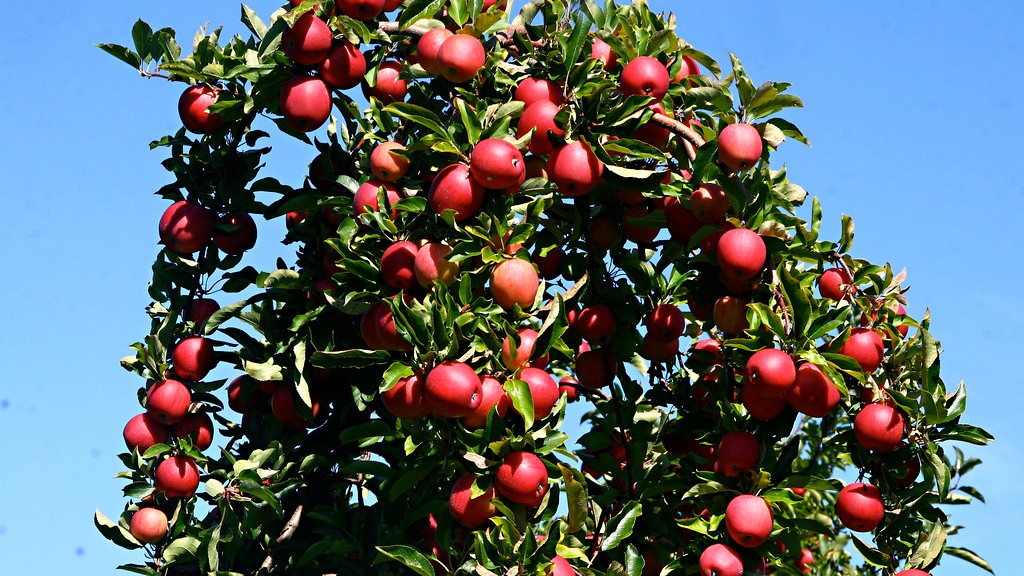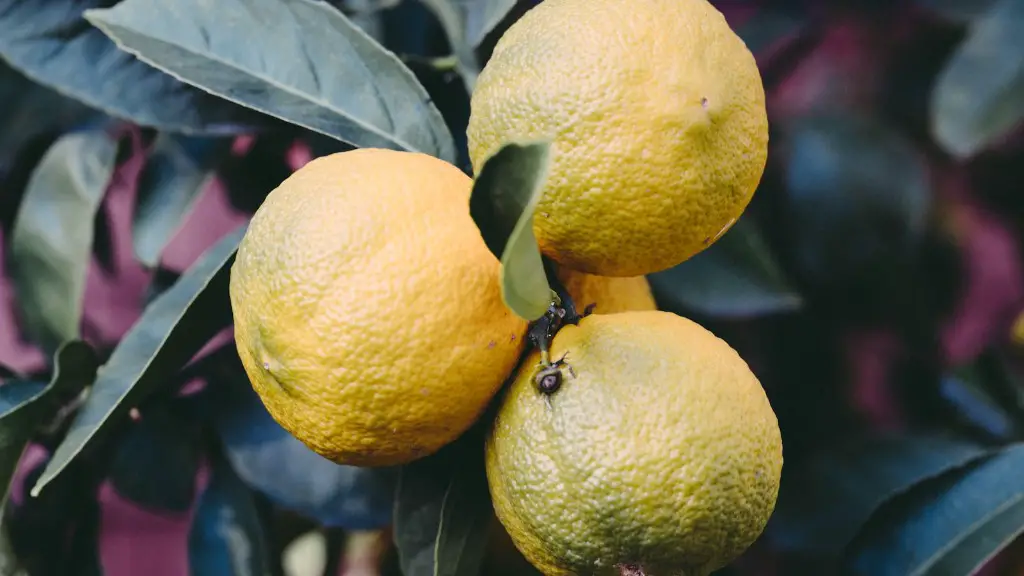Growing a miniature lemon tree can be both an easy and rewarding task. It is important to choose the correct variety of tree, give it the right conditions, and learn how to care for it properly in order to ensure it produces healthy lemons. Firstly, lemon trees should be planted in well-draining soil, which is usually a mix of soil, coir, and sphagnum moss. The soil should be amended with compost or manure to help create an even better environment for the tree. Secondly, the tree should be in a bright and sunny location, but should be shielded from direct sunlight in the hottest months of the year. A location near a window or balcony is ideal. Thirdly, watering the tree is important, especially during the peak growing period. The tree should be watered every day, and should be well-drained to avoid root rot. Fourthly, lemon trees need to be fed regularly with a balanced fertilizer to ensure a good yield. Natural fertilizers such as fish emulsion or kelp emulsion should be applied once or twice a month. Fifthly, pruning is important as it helps to promote healthy growth. Prune the tree away from the main stem of the tree as this will improve airflow and promote better fruiting. Lastly, pests and diseases should be monitored and controlled, especially during the summer months. Insects such as aphids and scale can be deterred by spraying with a diluted neem oil solution.
Condition of the Tree
The tree should be carefully monitored for any changes in condition, as this will help to identify potential problems before they become serious. Regular fertilizing, pruning, and pest control are important steps towards keeping the tree healthy. Inspecting the tree periodically can help to identify issues such as wilting, yellow leaves, or leaf spots. If any of these issues are present, they should be addressed immediately to prevent further damage to the tree.
It is also important to provide adequate support for the tree as it matures. If a strong, straight-trunked tree is desired, it is best to use a wire or trellis system while the tree is young. This will help to keep the trunk straight as the tree grows and will ensure the tree will be upright and stable over time.
Transplantation Care
If the tree needs to be moved or transplanted to a new location, it’s important to take the appropriate steps for ensuring the tree is not damaged during the process. The tree should be carefully removed from the pot, making sure all roots are intact. Once the tree is out of the pot, new soil should be added if needed before placing the tree in its new location. While transplanting, it’s also important to prime the root zone to help encourage new root growth in the new soil.
The tree should be watered immediately after transplantation and for several days afterwards. This will help to promote good root health and will help the tree to establish itself in its new home.
Harvesting
When it comes time to harvest the fruit, lemon trees need to be handled with care. Fruits should be hand-picked and should be left on the stem rather than cut off to prevent any wounds or infections of the tree. It is also important to leave a portion of the fruits on the tree when harvesting, as this helps to ensure a good yield the following year.
Fruits should be picked when they are ripe and when they have a nice yellow hue to them. This is usually when the fragrance is strong and the fruit starts to feel slightly soft. Unripe fruits can be left on the tree to ripen to full maturity, or they can be refrigerated for a couple of days to further ripen.
Winter Prep
When winter approaches, preparations need to be made to ensure that the tree can survive the cold temperatures without any damage. The best way to do this is to provide the tree with adequate protection. A frost cloth or fleece blanket can be used to help shelter the tree from cold winds and harsh weather. It is also advisable to keep the tree well-watered and mulched to help retain the warmth and moisture of the soil and to protect the tree’s roots.
In areas where temperatures drop below freezing, particularly in northern climates, the tree may require additional protection such as protective coverings or a frost chamber. If such precautions are taken, the tree should be able to survive the winter months unscathed.
Diseases and Pests
It is important to keep an eye out for disease and pests as these can cause damage to the tree and reduce the yield of lemons. Common diseases such as citrus canker and citrus quick decline can be identified by their typical symptoms, including wilting leaves, yellow leaves, spots and lesions on the fruits, and poor fruit yield. These diseases can be treated with natural remedies such as neem oil.
Pests such as aphids, scale, and mealy bugs can also be problematic for lemon trees, as they can feed on the leaves and fruits of the tree. These pests can be controlled with organic pest control such as neem oil, soaps, and horticultural oils. It is important to inspect the tree periodically to ensure any pests or diseases are controlled before they can cause significant damage.
Propagation
Lemon trees can be propagated easily by air layering, cuttings, or by grafting onto a suitable rootstock. Air layering is the simplest method and requires a branch to be wrapped in moist sphagnum moss and then covered with a plastic bag. This method helps the branch to create new roots and can then be cut from the parent tree and placed in a pot. Cuttings can be taken from either the stem or branch of the tree and should be treated with a rooting hormone before being inserted into moist soil. Grafting onto a rootstock involves cutting a scion from the miniature lemon tree and joining it to a suitable rootstock.
Propagation should take place during spring or early summer when new growth is most pronounced. Propagated trees should be kept in a warm, humid location until they have established roots and can be transplanted into a pot or into the garden.
Tree Health
To ensure the tree remains healthy and produces good yields of lemons, it is important to watch out for any pests or diseases and take action to treat them as soon as possible. Regular fertilizing and pruning are also important for promoting healthy growth. Providing adequate support for the tree, particularly when young, is also important to help it achieve a strong, straight trunk.
Lastly, when it comes to harvesting the lemons, make sure to handle the tree and fruits with care. Carefully pick the fruit from the stem to avoid causing damage to the tree. Reserve some of the fruit on the tree when harvesting so the tree can continue producing lemons the following year.



